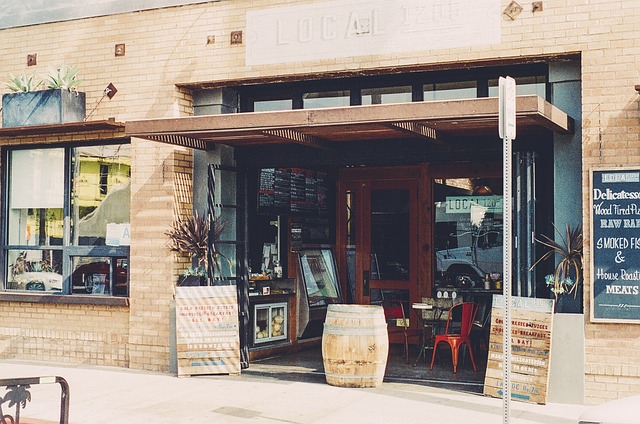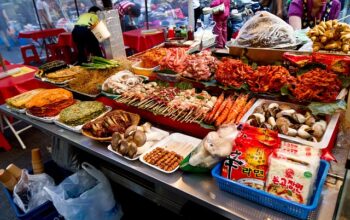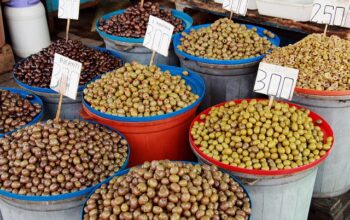Local food delivery services have become a vital component for ensuring seniors with dietary limitations or meal access issues receive nutritious and flavorful meals. These services partner with local farmers and producers to deliver fresh, high-quality ingredients that are rich in essential nutrients. The short supply chain from farm to table helps preserve the food's nutritional value while enhancing its taste. Meals can be customized to cater to individual dietary needs, health conditions, and cultural preferences, optimizing nutrition for personal well-being. Additionally, these services support local economies and promote sustainable agricultural practices. The integration of local produce not only contributes to the community's economic vitality but also ensures freshness and reduces environmental impact. For seniors, this means enjoying healthy, tailored meals delivered directly to their homes. These meal delivery programs are a testament to collaborative efforts within communities, fostering social connections and public health support through meal preparation initiatives. The success of these programs hinges on the use of local ingredients, adherence to food safety standards, and the involvement of culinary experts who prioritize both taste and nutrition. Keywords: Local Food Delivery, Meal Preparation for Seniors.
Local food delivery services have become a cornerstone in ensuring the nutritional well-being of seniors, offering tailored meal solutions that cater to their unique dietary needs. This article delves into the transformative effects of these programs on senior nutrition, shedding light on the logistics behind effective meal preparation and the vital role community support plays in enriching these initiatives. Join us as we explore how local food delivery is not just a service, but a pathway to better health for our aging population.
- Understanding the Impact of Local Food Delivery on Senior Nutrition
- Exploring the Logistics of Meal Preparation for Senior Programs
- The Role of Community Support in Enhancing Senior Meal Delivery Initiatives
Understanding the Impact of Local Food Delivery on Senior Nutrition

Local food delivery services have become a pivotal component in supporting the nutritional health of seniors, particularly those who face challenges in accessing or preparing meals independently. These services often collaborate with local farms and producers to provide fresh, nutrient-rich ingredients, ensuring that seniors receive meals high in essential vitamins and minerals. The proximity of these food sources can significantly reduce the time between harvest and consumption, locking in vital nutrients and enhancing the overall quality and taste of the meals. Furthermore, meal preparation tailored to individual dietary needs and preferences can be arranged, accommodating a range of health conditions and cultural backgrounds. This customization not only improves the nutritional intake but also offers a diverse culinary experience, making meals more enjoyable and satisfying for recipients. By fostering connections with local producers, these delivery services also support the local economy and promote sustainable agricultural practices, which are beneficial for both the community and the environment. This model of local food delivery is proving to be a viable solution for ensuring that seniors have access to healthy, appetizing meals delivered right to their doorstep.
Exploring the Logistics of Meal Preparation for Senior Programs

When crafting a senior meal delivery program, the logistics of meal preparation are pivotal to ensure that participants receive nutritious and appealing food on a consistent basis. These programs often rely on local food delivery systems to source ingredients, which not only supports the community’s economy but also minimizes the carbon footprint associated with transporting food over long distances. The process begins with selecting fresh, high-quality ingredients from nearby producers and suppliers, ensuring that each meal is prepared with care and attention to dietary needs and restrictions. Meal preparation typically involves a team of culinary professionals who specialize in creating dishes tailored for seniors, taking into account taste preferences, nutritional requirements, and texture modifications as needed. These meals are then carefully packaged, often using environmentally friendly materials, and labeled with clear information regarding the contents, ingredients to avoid, and heating instructions. The preparation and packaging processes are designed to maintain food safety standards and maximize the shelf life of the meals while preserving flavor and nutritional value. Coordination between meal preparation facilities and delivery services is key, as they must work in harmony to ensure that meals arrive at their destinations on time, maintaining optimal temperature conditions to safeguard food quality. Through meticulous planning and execution, these programs provide a vital service for seniors, ensuring they have access to delicious, healthy meals right at home.
The Role of Community Support in Enhancing Senior Meal Delivery Initiatives

Community support plays a pivotal role in the success of senior meal delivery programs, enhancing the reach and quality of local food delivery services for elderly individuals. Volunteer-driven initiatives often partner with local grocers and food suppliers to source fresh and nutritious ingredients, ensuring that the meals prepared meet the dietary needs and preferences of seniors. These partnerships not only improve the nutritional outcomes but also foster a sense of connection between the community and its older members, creating a network of care and companionship.
Moreover, the involvement of local organizations, including faith-based groups, civic associations, and meal preparation services, contributes to a diversified approach in addressing food security issues for seniors. By leveraging the skills and resources of these entities, programs can offer a more consistent and reliable service, tailoring meals to accommodate various health conditions and restrictions. This collaborative effort not only addresses the immediate need for sustenance but also embodies the ethos of community solidarity, making local food delivery a cornerstone of senior well-being and a testament to the collective investment in public health and social welfare.
In conclusion, local food delivery programs have proven to be a vital component in addressing the nutritional needs of seniors. These initiatives not only offer a lifeline for ensuring proper meal preparation but also foster community engagement and support. As evidenced throughout this article, these programs contribute significantly to the well-being and health of older adults by providing them with access to nutritious meals tailored to their dietary requirements. The logistics of meal preparation for senior programs are intricate but manageable with a concerted effort from stakeholders. Community involvement remains pivotal in enhancing these delivery services, making them more efficient and responsive to the needs of seniors. As we continue to adapt and improve upon these programs, it is clear that they hold immense potential to positively impact the lives of our elderly population. Local food delivery stands as a testament to the collective ability to innovate and provide for those who have contributed so much to our communities.


